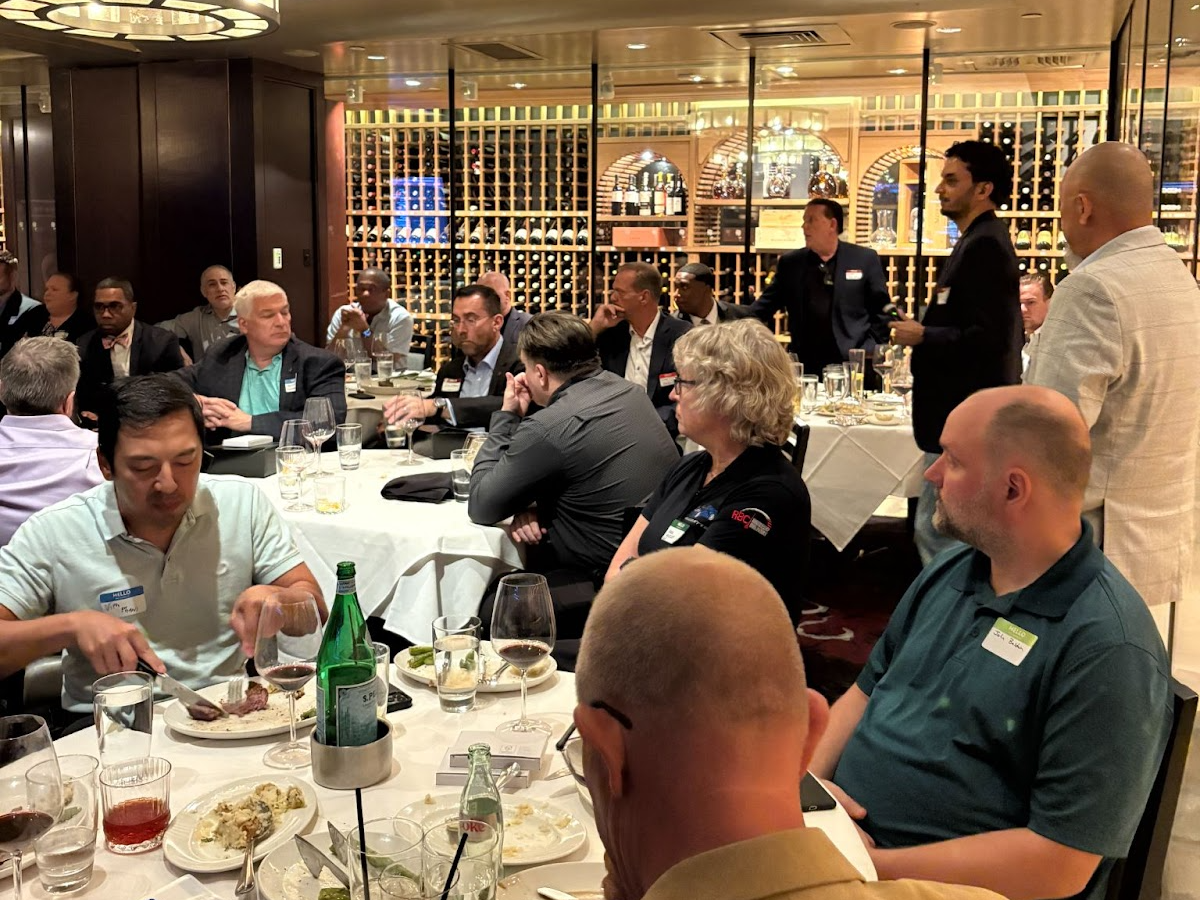Highlights of Our CISO Dinner
Upgrading struggling vulnerability management programs to Threat Exposure Management, with Host, CISO Al Lindseth formerly from Plains All American Pipeline and PWC - 6 minute podcast

If you were one of the many CISO’s, CIO’s or cybersecurity leaders who joined our Threat Exposure Management dinner at Del Frisco’s Steak House in Houston yesterday, thank you for joining an oversold event! If you didn’t have the opportunity to join, this summary highlights why Threat Exposure Management is quickly replacing the legacy – and largely ineffective – approach of using a vulnerability scanner to protect your organization.
If you’re tired of drowning in a sea of critical and high-severity vulnerabilities with no clear direction on what to fix first, you’re not alone. This sentiment was at the heart of a recent CISO dinner hosted by Al Lindseth, featuring Critt Golden, CTEM Evangelist from Hive Pro. The discussion centered on a critical paradigm shift: moving from traditional, volume-based vulnerability management to a targeted, intelligence-driven exposure management strategy.
For security teams buried in scanner output and compliance checkboxes, the insights offered a clear path forward. Here are the key takeaways for practitioners in the trenches.
The evening began by framing the core challenges faced by modern security teams:
→ Alert Overload:
Organizations are dealing with tens of thousands of vulnerabilities—one cited example started with 48,000. Traditional scanners flood teams with data but provide little context for prioritization beyond CVSS scores, which lack real-world exploit context.
→ Misguided Focus:
As one attendee noted, “We have not had any successful attacks on our cloud infrastructure… The attacks… always, literally 100% have come from end users.” Yet, teams spend immense effort patching infrastructure based on generic scores, while attackers target softer, often lower-scored vulnerabilities.
→ The “Lazy Attacker” Reality:
Golden emphasized that most attackers are “lazy.” They don’t always go for the critical-rated vulns; they exploit the path of least resistance—often medium and low-severity vulnerabilities that are easier to exploit and less likely to be patched quickly.
→ Cultural Hurdles:
Developers often resist patching, with one practitioner sharing the frustrating refrain: “we didn’t decide to fix this vulnerability because there’s no active threat.” This highlights a fundamental disconnect between security priorities and development workflows.
The core of the discussion was a new definition of risk. An exposure is not just a vulnerability. According to Hive Pro, a true exposure exists when four conditions converge:
1. A Vulnerability Exists:
This is the baseline.
2. It Resides on a Critical Asset:
Asset criticality, derived from CMDBs or manual tagging, is non-negotiable. The platform explicitly avoids automated criticality inference to ensure accuracy.
3. It is Actively Exploited in the Wild:
This is where threat intelligence becomes crucial. Is the vulnerability weaponized? Is it part of a proof-of-concept framework? Is there zero-day activity? Is a known threat actor like Scattered Spider targeting it?
4. Compensating Controls Fail:
This is the game-changer. If you can’t patch, you rely on your EDR, firewall, or WAF. The key question is: Do they actually work? Exposure management validates this through automated, event-driven attack simulations.
By focusing on this precise definition, Hive Pro claims to reduce vulnerability noise by 95% on average, narrowing a typical list of 48,000 vulnerabilities down to about 160 truly exploitable ones. From that shortlist, they can pinpoint which ones are weaponized, wormable, or have active zero-day activity, forcing an immediate and justified shift in resources.
For teams looking to implement this approach, the discussion highlighted several key operational pillars:
→ Unified Data Plane:
Stop juggling disparate tools. The solution aggregates and normalizes data from all your existing scanners (Qualys, Tenable, Wiz, CrowdStrike, etc.) into a single source of truth. This eliminates manual aggregation, which one attendee noted can take teams of 12-16 people down to a single FTE.
→ Integrate, Don’t Rip and Replace:
The platform is largely agentless for scanning and works with your existing toolset. The philosophy is “use your scanners or ours, but give us your data.” This reduces friction for adoption.
→ Event-Driven Validation, Not Continuous Pen Testing:
Instead of running resource-intensive, continuous pen tests, the platform identifies the “blast radius” (e.g., 20 critical assets) for a given threat and runs targeted simulations. This validates controls where it matters most, without overwhelming blue teams.
→ Bridge the IT-SEC Workflow Gap:
Bi-directional integration with ticketing systems like ServiceNow and Jira ensures that findings are operationalized within existing workflows. Tickets can be clustered by criticality, helping teams understand and coordinate fixes for related exposures.
→ Enable Threat Hunting for All Maturity Levels:
With nearly daily threat advisories filtered for your geography and industry, the platform allows even resource-constrained teams to conduct proactive threat hunting. It helps answer the critical question: “This threat is trending—does it affect me?”
The dinner concluded with a powerful consensus: this is a cultural and strategic evolution.
→ From Compliance to Risk:
The goal is to shift from “patching for compliance” to “remediating for business risk.” Future compliance frameworks are expected to catch up, mandating exposure-based assessments over simple vulnerability counts.
→ Speak the Language of Business:
Framing security in terms of exposure—tying it to potential revenue loss, brand damage, and operational downtime—is what finally gets the attention of leadership and boards.
→ Embed Security in Quality:
The most successful organizations are those where developers view vulnerability remediation as part of product quality and stability, not a separate security hurdle.
For security practitioners, the message was clear: Stop chasing vulnerabilities and start managing exposures. By fusing asset criticality, threat intelligence, patch status, and—most importantly—empirical control validation, teams can finally focus their limited resources on the few risks that truly matter and sleep better knowing they’ve addressed the attacks that are most likely to happen.
The good news, if you missed this CISO meetup, you can join us in November for another meetup. Contact Dan@hivepro.com for details.
